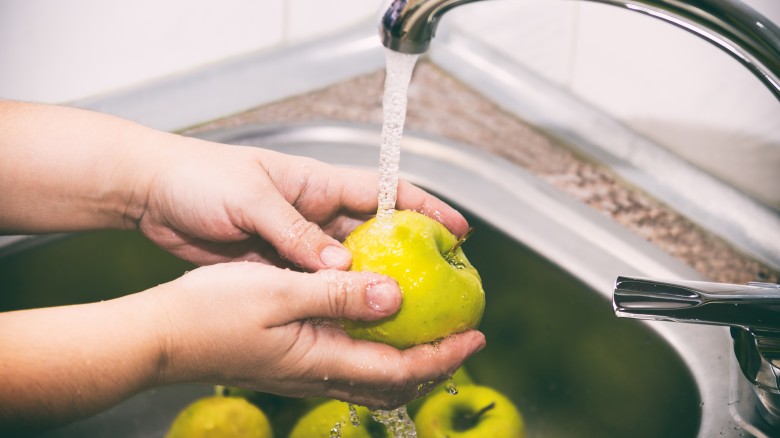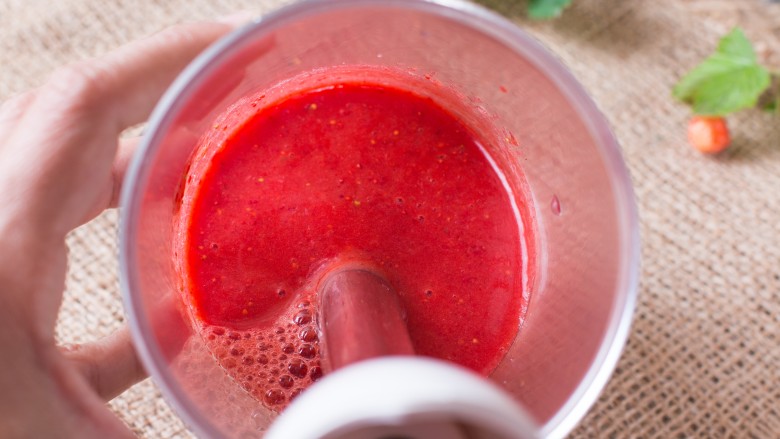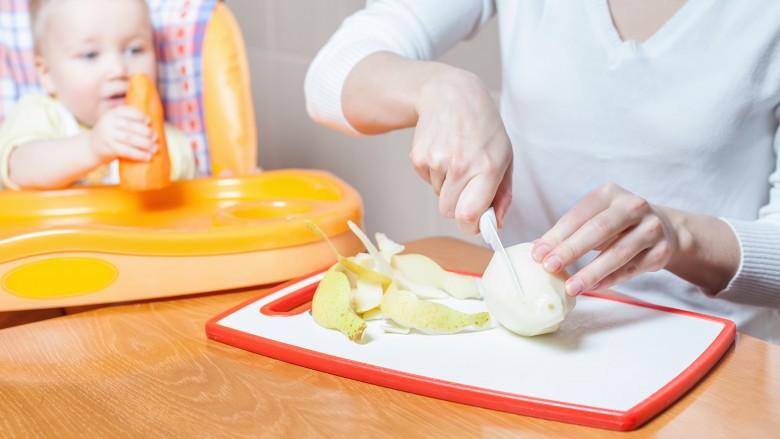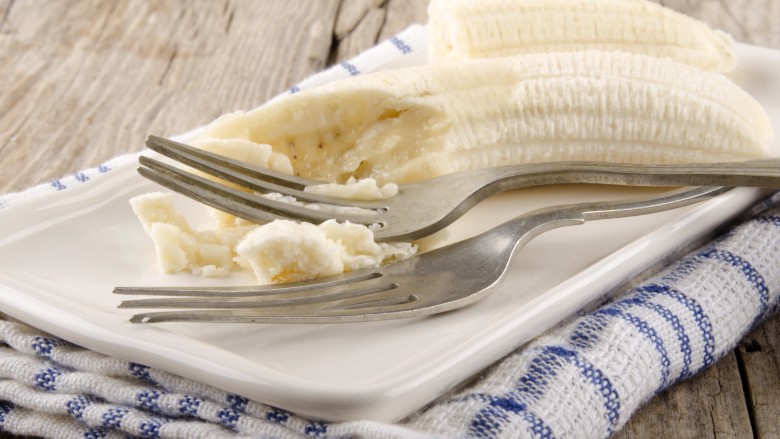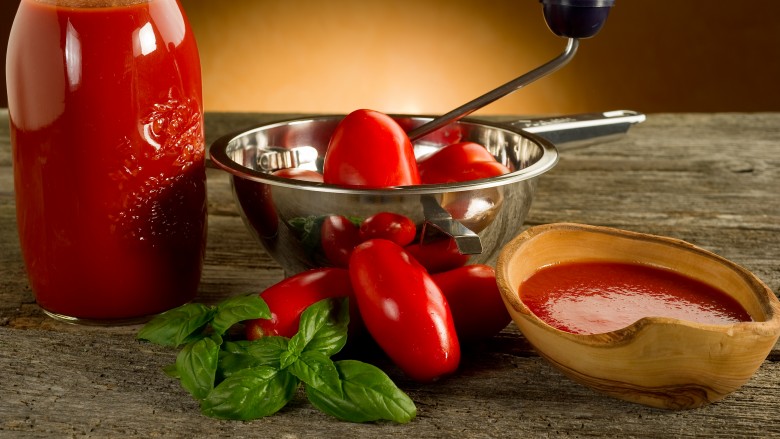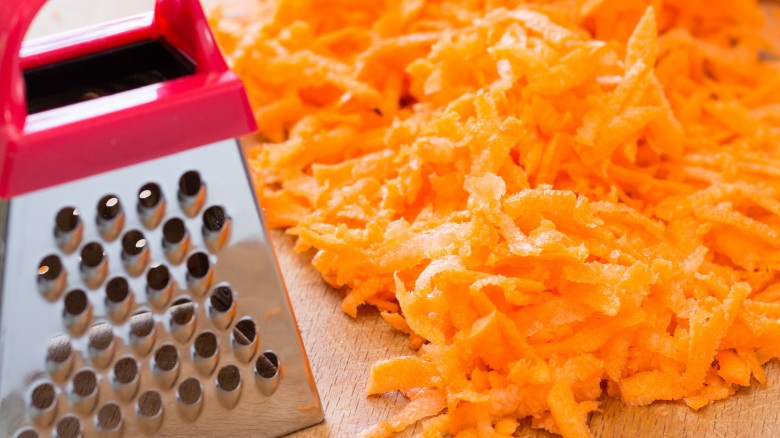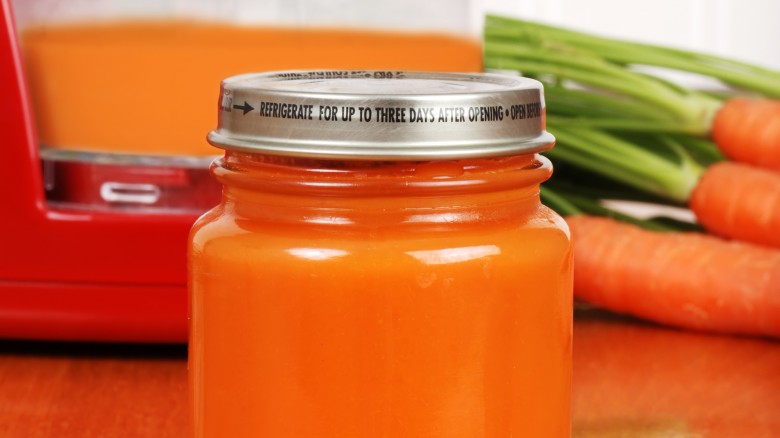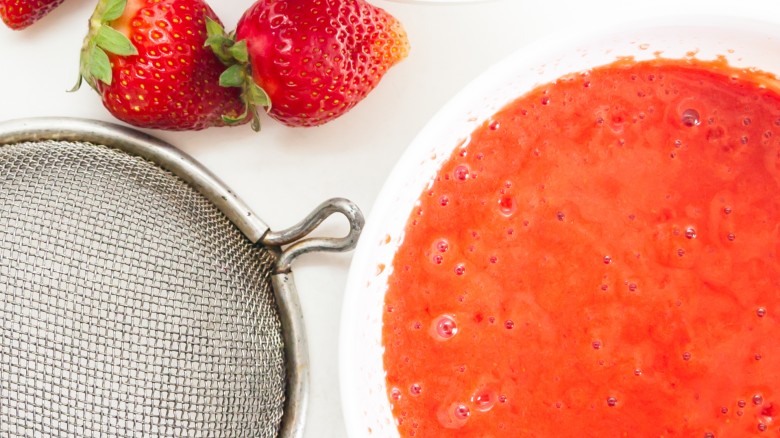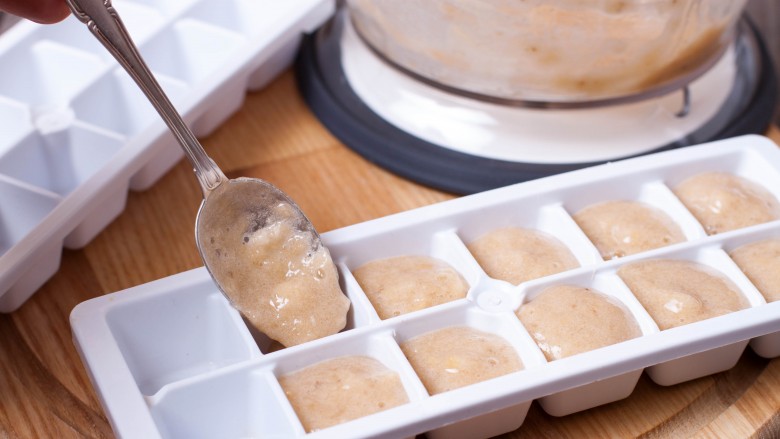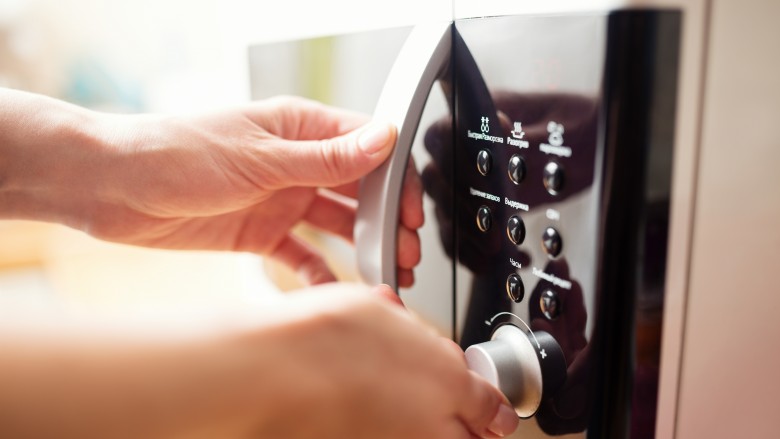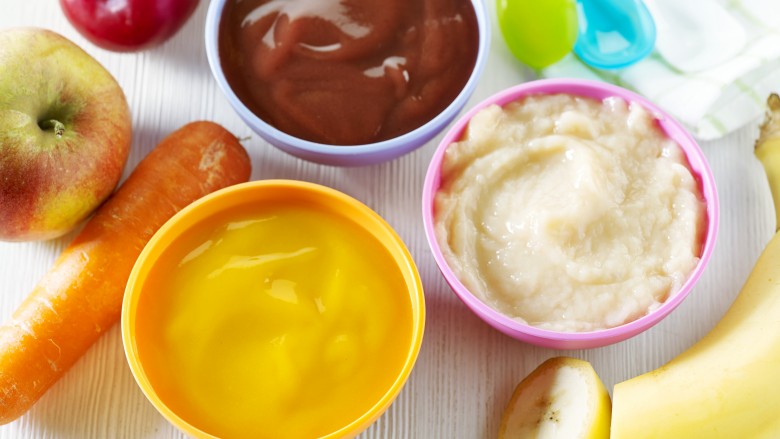Everything You Need To Know About Making Baby Food At Home
We may receive a commission on purchases made from links.
Have you ever considered feeding your sweet baby homemade food, only to later dismiss the idea as being more trouble than it's worth? If this sounds familiar, I can totally understand since the endeavor seems to require the kind of time and effort you might not feel you have in surplus. Buying pre-made jars from the grocery store may seem infinitely easier in comparison. I'm here to let you in on a secret, but don't tell Gerber, okay? Preparing baby food at home is super simple, surprisingly cost-effective, and much better for your little one.
As a parent, I'm sure you're eager to introduce your baby to healthy eating habits ASAP. There's no better way to get him or her started on solids than by making fresh food at home since you can determine the quality and variety of the ingredients. You end up saving money, too, since your baby gets to enjoy the foods the rest of your family eats on the reg. The best part? Making baby food isn't just for those overachieving parents who put everyone else to shame. Anyone can do it with minimal effort!
Here's a quick guide to everything you need to know to get started on your baby food making adventure. It's loads of fun and your baby will love trying new ingredients in the process—a surefire way to raise an adventurous eater from the start.
Keep everything baby-safe
As with any kind of food preparation, you want to be sure to uphold general hygiene standards in the kitchen. To that end, always wash your hands with soap before handling ingredients. Related, any equipment used to prepare your baby's food—think cutting board, pots, pans, and utensils—should be thoroughly sanitized, washed, and cleaned. Wash all fruits and vegetables well and remove seeds and pits as needed. Be sure to cool (if necessary), cover, and refrigerate or freeze the baby food immediately after preparing it to avoid spoilage. If you're not freezing the food, keep it in the fridge for two days tops before tossing if unused.
Tools of the trade
To get the job done right and with maximum ease, be sure you have all the kitchen tools you need before getting started. Luckily, the list includes many things you may already have in your kitchen.
- Peeler
- Food processor or blender
- Food mill or grinder, potato masher, or fork and sieve if preparing manually
- Pots and pans
- Steamer basket
- Ice cube trays or small freezer-safe containers
- Freezer bags
- Masking tape
- Permanent marker, such as a Sharpie
Choose your method of prep
There are a variety of ways to prepare baby food, giving you plenty of options depending on what type of equipment you want to invest in for your kitchen. SInce making food for your baby is meant to be an easy, inexpensive, and nutritious project, there's no need to stress over the process. There are several methods you can employ to make delicious foods your baby will love.
The old-fashioned way: Mash it!
Begin by steaming, boiling, microwaving, or baking foods until they are tender. For soft fruits and vegetables such as ripe bananas and avocados or cooked ones like squashes, potatoes, apples, and pears, you can simply use a potato masher or fork to mash to desired consistency.
Food mills or grinders can be lifesavers
If you want to prepare foods without going through the trouble of removing the skin and seeds beforehand, try using a manual food mill or grinder. To do so, roughly chop the ingredients into small, bite-sized pieces and manually process them through the food mill. The food will be mashed, but the skin and seeds will stay in the mill like magic.
Chop or grate if your baby's ready for some texture
Chop or grate ingredients if your baby has started to self-feed. Simply cut the food into tiny pieces or grate it using a cheese grater, then mix with liquid to soften. Voila! This preparation is perfect for babies who are working toward eating more grownup solids like soft pastas, mashed potatoes, and scrambled eggs.
Food processor or blender
A food processor or a blender can be a miracle worker if you plan to make baby food regularly. Put the food into a the machine and pulse at 30-second intervals until the mixture reaches the desired consistency suitable for your baby. You can add liquid such as water, cooking water from the ingredient prep, or even breast milk to thin out the puree as needed.
Use a sieve if you want super smooth baby food
When you're preparing foods with skins, like peas or green beans, you may want to reach a finer texture than your food processor can achieve. Simply process the cooked food using one of the methods above, then place it into a sieve and push it through directly into a bowl.
How to store all the baby food you just made
Freezing prepared homemade baby food in ice cube trays is an ideal storage trick. Doing so results in pre-portioned amounts of food that are ready to go when your baby's hungry. You can have easy fun mixing and matching the different foods to boot. To store baby food this way, simply transfer spoonfuls of the prepared food into the slots of an ice cube tray. Cover with plastic wrap and place in the freezer for one or two hours. Once the cubes are completely frozen, pop them out of the tray and into a freezer bag. Use masking tape and a permanent marker to label the bag with its contents and date. The latter will tell you when one month has passed and you should toss any unused food.
Heating and thawing baby food
You have a few options when it comes to heating or thawing prepared baby food. Keep in mind that babies don't necessarily need their foods to be hot, so feeding it to them at room temp is fine, also. If using a microwave, be sure to stir to avoid pockets of food that may be too hot for your baby. If you plan ahead, you can also thaw frozen baby food in the fridge overnight.
Ingredient prep know-how
When you prepare fruits for your baby, be sure to wash them well. Peel and remove seeds and pits as needed. With very ripe fruits such as peaches, apricots, bananas, and avocados, you can just mash, skipping the cooking. With veggies, you must still wash well and peel as necessary, then steam, boil, or bake until softened before mashing or processing. Lastly, you can incorporate proteins into your baby's diet, but stick with fully-cooked meats you can puree or grind (with some liquid as needed) to achieve a consistency soft enough for your baby.
I hope this guide helps to empower you to feed your baby nourishing homemade foods. If you have any concerns, do not hesitate to consult a pediatrician. That said, have fun sharing your love of food with your baby.

